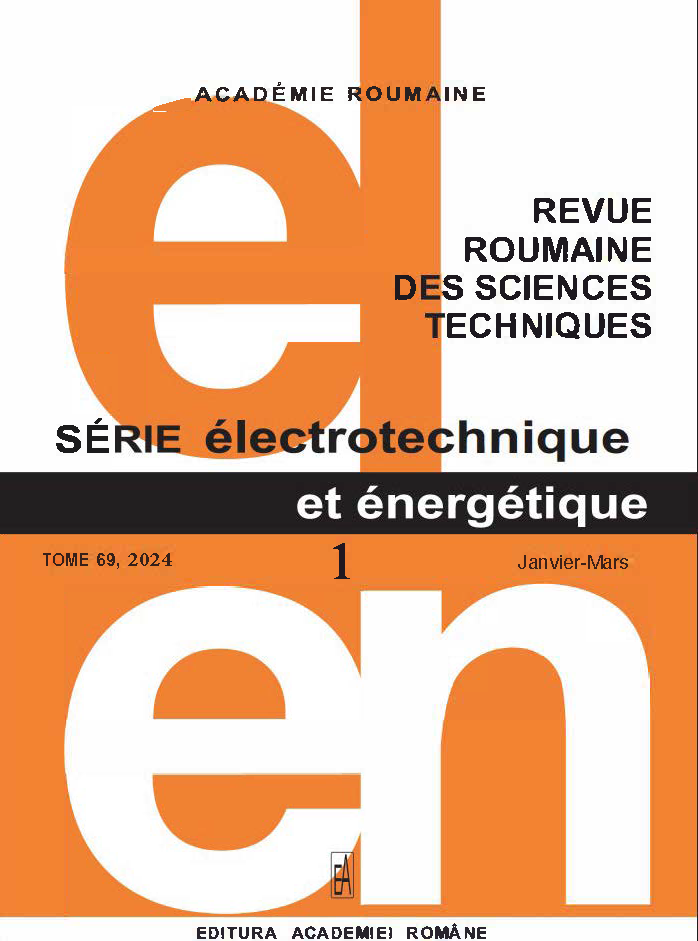DEEP VEIN NET: DEEP VEIN THROMBOSIS IDENTIFICATION VIA SOOTY TERN OPTIMIZED DEEP LEARNING NETWORK
DOI:
https://doi.org/10.59277/RRST-EE.2024.1.20Keywords:
Deep vein thrombosis, Deep learning, Discrete wavelet transform, Dilated convolutional neural network, Sooty tern optimization algorithmAbstract
Deep vein thrombosis (DVT) occurs when thrombosis (blood clots) forms in veins far below the skin's surface due to veins or sluggish blood flow injuries. An obstruction in blood flow through a vein could be partially or completely caused by blood clots. DVTs typically occur in the thigh, lower leg, or pelvis, yet can also occur in other body parts, such as the brain, liver, intestines, arm, or kidney. This research proposes a novel Deep Vein Net, integrating deep learning-based dilated CNN and Sooty Tern optimization to detect DVT from CT and MRI images efficiently. The input CT and MRI images are pre-processed to eliminate noise artifacts using the Discrete Wavelet Transform (DWT). Furthermore, the pre-processed images are fed into a Dilated convolutional neural network (Dilated CNN) for feature extraction to extract the most pertinent features. Lastly, the STO algorithm uses the fuzzy Extreme Learning Machine of thrombosis stages normal and DVT to select the best features for additional classification. Metrics like rec, spe, acc, pre, and F1 scores were used to assess the Deep Vein Net's performance. The suggested method achieves a classification accuracy of 99.25 % when identifying DVT cases.
References
(1) H.Y. Ko, Deep vein thrombosis and pulmonary embolism in spinal cord injuries, Management and Rehabilitation of Spinal Cord Injuries, Singapore: Springer Nature Singapore, pp. 513–526 (2022).
(2) B. Kainz, M.P. Heinrich, A. Makropoulos, J. Oppenheimer, R. Mandegaran, S. Sankar, C. Deane, S. Mischkewitz, F. Al-Noor, A.C. Rawdin, A. Ruttloff, Non-invasive diagnosis of deep vein thrombosis from ultrasound imaging with machine learning, NPJ Digital Medicine, 4, 1, pp. 137 (2021).
(3) C. Broderick, L. Watson, M.P. Armon, Thrombolytic strategies versus standard anticoagulation for acute deep vein thrombosis of the lower limb, Cochrane Database of Systematic Reviews, 1 (2021).
(4) S.M. Kolokotroni, Deep vein thrombosis and pulmonary embolism following lung resection, Shanghai Chest, 5, 33, pp. 1–5 (2021).
(5) S.H. O'Brien, D. Li, L.G. Mitchell, T. Hess, P. Zee, D.L. Yee, J.W. Newburger, L. Sung, V. Rodriguez, PREVAPIX-ALL: apixaban compared to standard of care for prevention of venous thrombosis in pediatric acute lymphoblastic leukemia (ALL)—rationale and design, Thrombosis and Haemostasias, 119, 05, pp. 844–853, (2019).
(6) C. Burton, P. Fink, P. Henningsen, B. Löwe, W. Rief, Functional somatic disorders: a discussion paper for a new common classification for research and clinical use, Bmc Medicine, 18, 1, pp. 1–7 (2020).
(7) E. Muscogiuri, M. Di Girolamo, C. De Dominicis, A. Pisano, C. Palmisano, G. Muscogiuri, A. Laghi, Pulmonary embolism and computed tomography angiography: Characteristic findings and technical advice, Imaging, 14, 1, pp. 28–37 (2021).
(8) M.H. Jalili, T. Yu, C. Hassani, A.E. Prosper, J.P. Finn, A. Bedayat, Contrast-enhanced MR Angiography without Gadolinium-based contrast material: clinical applications using Ferumoxytol, Radiology: Cardiothoracic Imaging, 4, 4, pp. 210–323 (2022).
(9) Y. Zhang, Machine Learning in Clinical Application of Medical Imaging for Lesion Detection, Segmentation, Diagnosis, Therapy, and Prognosis Prediction, UC Irvine Electronic Theses and Dissertations, University of California, Irvine (2020).
(10) Y. Huang, Deep representation and graph learning for disease diagnosis on medical image data, Hong Kong University of Science and Technology Hong Kong (2021).
(11) A. Topor, D. Ulieru, C. Ravariu, F. Babarada, Development of A New One-Eye implant by 3D bioprinting technique, Rev. Roum. Sci. Techn. – Électrotechn. Et Énerg., 68, 2, pp. 247–250 (2023).
(12) A. Glavan, V. Croitoru, Incremental learning for edge network intrusion detection, Revue Roumaine Des Sciences Techniques—Série Électrotechnique Et Énergétique, 68, 3, pp. 301–306 (2023).
(13) T.H. Xia, M. Tan, J.H. Li, J.J. Wang, Q.Q. Wu, D.X. Kong, Establish a normal fetal lung gestational age grading model and explore the potential value of deep learning algorithms in fetal lung maturity evaluation, Chin. Med. J., 134, 15, pp. 1828–1837 (2021).
(14) K. Kardaras, N. Apostolou, G.I. Lambrou, M. Sarafidis, D. Koutsouris, development and evaluation of advanced image analysis techniques for pediatric deep vein thrombosis imaging scans, 19th International Conference on Bioinformatics and Bioengineering (BIBE), IEEE, pp. 296–300 (2019).
(15) D. Lynch, M. Suriya, PE-DeepNet: A deep neural network model for pulmonary embolism detection, Int. J. Intell. Networks, 3, pp.176–180 (2022).
(16) H. Khachnaoui, M. Agrébi, S. Halouani, N. Khlifa, deep learning for automatic pulmonary embolism identification using CTA images, 6th International Conference on Advanced Technologies for Signal and Image Processing (ATSIP), IEEE, pp. 1–6 (2022).
(17) M. Khan, P.M. Shah, I.A. Khan, S.U. Islam, Z. Ahmad, F. Khan, Y. Lee, IoMT-enabled computer-aided diagnosis of pulmonary embolism from computed tomography scans using deep learning. Sensors, 23, 3, pp.1471 (2023).
(18) C.Y. Yu, Y.C. Cheng, C. Kuo, Early pulmonary embolism detection from computed tomography pulmonary angiography using convolutional neural networks, Joint 9th International Conference on Informatics, Electronics & Vision (ICIEV) and 2020 4th International Conference on Imaging, Vision & Pattern Recognition (icIVPR), IEEE. pp. 1–6 (2020).
(19) H. Liu, H. Yuan, Y. Wang, W. Huang, H. Xue, X. Zhang, Prediction of venous thromboembolism with machine learning techniques in young middle-aged inpatients, Sci. Rep. 11, 1, pp.12868 (2021).
(20) K. Gayathri, K. P. Ajitha Gladis, A.A. Mary, Real-time masked face recognition using deep learning based Yolov4 network, International Journal of Data Science and Artificial Intelligence, 01, 01, pp. 26–32 (2023).
(21) J.A. Sajani, A. Ahilan, Classification of brain disease using deep learning with multi-modality images. Journal of Intelligent & Fuzzy Systems, Applications in Engineering and Technology 45, 2, pp 3201–3211 (2023).
(22) K.B. Shah, S. Visalakshi, R. Panigrahi, Seven class solid waste management-hybrid features based deep neural network, International Journal of System Design and Computing, 01, 01, pp. 1–10 (2023).
Downloads
Published
Issue
Section
License
Copyright (c) 2024 REVUE ROUMAINE DES SCIENCES TECHNIQUES — SÉRIE ÉLECTROTECHNIQUE ET ÉNERGÉTIQUE

This work is licensed under a Creative Commons Attribution-NonCommercial-NoDerivatives 4.0 International License.


